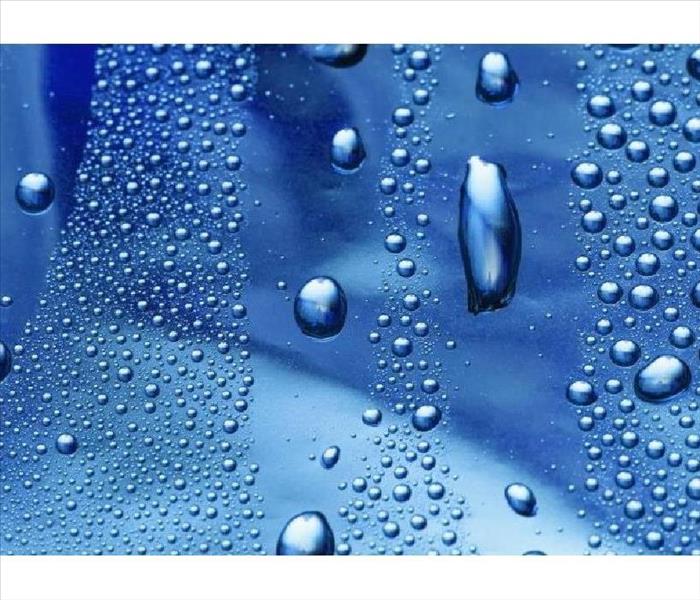Saving Water Damaged Electronics
11/26/2018 (Permalink)
Water-damaged electronics can present a serious hazard. Do not attempt to turn on or operate any electrical device that you suspect has been damaged by water. SERVPRO of Easton, Bethlehem & Whitehall can coordinate the restoration of your electronics, including TVs, DVD players, computers, tablets, cell phones, and more.
The Key To Electronic Cleanup
The key to restoring electronics is taking prompt action to prevent further damage. SERVPRO of Easton, Bethlehem & Whitehall starts by cleaning the exterior of your electronic devices to help stop further corrosion and damage. With us, your electronics will be cleaned and inspected by a qualified electronics technician.
Cleaning Up Corrosion
When it comes to cleaning up corrosion after water damage, be careful. If you don’t use proper tools and techniques you can further damage your water-damaged electronic devices. You could also potentially injure yourself. Remember: electronic devices and liquids generally don’t mix. Any time you apply a liquid cleaning solutions to an electronic device, you need to be cautious. SERVPRO of Easton, Bethlehem & Whitehall recommends that the average consumer never attempt to repair a water-damaged electronic device without professional assistance. When in doubt, take your device to a professional. If you are confident about cleaning up corrosion on your water-damaged electronic device by yourself, please keep these tips in mind:
1. Keep safety first
If you’re standing in water or your clothes are wet please remove yourself from any potential shock hazard before even thinking about retrieving a submerged or soaked electronic device. If the device is still on, turn it off. If possible, rotate and shake the electronic device to try to drain out any fluid.
2. Always remove any batteries or power connectors.
This not only prevents harm to you, but also prevents any short-circuiting of your electronic device. By doing this, you will also be exposing extra connectors that may already have corroded, so exercise caution. A shorted battery may be a fire and/or chemical hazard. If you see or feel any heat, smoke, steam, bubbling, bulging, or melting avoid handling the electronic device.
3. Look for white or green “crusty” areas on the device.
You may find them on the battery connectors, charging ports, SIM card connectors, or any other major metal connectors on the device.
4. Use cotton swabs and a cleaning solution such as isopropyl alcohol.
You can also use baking soda and water or vinegar to clean corrosion. Gently apply the solution to the affected area and wipe back and forth until you’ve removed the corrosion. If necessary, leave some solution on the corroded area and wipe it off later.
5. Dry your electronic device with a soft cloth or a hair dryer on a cool setting.
Do not use heat to dry out your device. Make sure your device is dried extremely well before attempting to replace the battery and turn the device on. Any water left in the device could cause additional water damage.
6. Take special care with electronic circuit boards.
If you think water or any liquid has reached an electronic circuit board take the device apart carefully. Follow the instructions and remember the order of the disassembly so you can put the device back together later. Soak up any remaining liquid on the circuit board with a lint-free cloth. Don’t use paper products (they could leave lint or scratch the board). Avoid rubbing any cloth on the circuit board because that might scratch or dislodge parts. Place the cloth over the board and press gently. This will soak up the liquid. Remove the worst of any remaining particles by brushing with a toothbrush. This includes any globs of dried liquid. You don’t need perfection at this stage. Then remove any dust or loose pieces of dried liquid by spraying the board with compressed air. Spray in one direction in quick bursts, since the canister can become extremely cold if used for longer sprays. Rinse the circuit board with clean or distilled water to remove any sticky materials. If your circuit board was wet by clean water and you didn’t have to remove dried materials, you may be able to skip this. Pat the board gently with a cloth to remove the majority of the moisture and allow it to dry completely. Clean any residue off the circuit board using a cotton swab. Moisten the cotton swab in isopropyl alcohol. Do not use a dripping wet swab. Swab gently in stubborn areas and be careful not to upset the components. The alcohol should take care of most of the work without rubbing.
7. Cross your fingers
When you try to repair a water-damaged electronic device there are no guarantees. The water-damage or corrosion may be permanent. These steps improve your chances of repairing it, but in the end you just have to cross your fingers and hope for the best.
Call us today! 800-455-9453





 24/7 Emergency Service
24/7 Emergency Service
